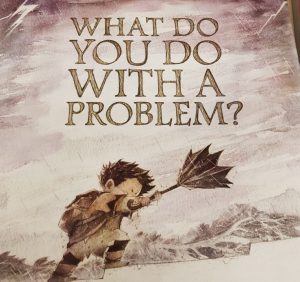WHAT IS “RECALIBRATE TIME”?: Being a Lifelong Learner, Mindfulness, Active Listening
Hello Everyone!
We had a great first week in MACC 4/5, and I am looking forward to our year together!
A reminder, here is what I use each type of communication for. There is no guaranteed frequency or times of the month for each. I post when it is needed and appropriate.
EMAIL: Important reminders about events, things to bring, field trip details, etc. Communciating with you about your child and setting up appointments.
TWITTER (X): Posting of pictures from class or forwarding interesting posts if appropriate. Students are not to have accounts on this, please.
CLASS BLOG: Information explaining our unit, criteria and instructions for larger projects, and discussions we have had in class. All parents are subscribed and will receive blog updates via email when I post.
______________________________________________________________________
What does it mean to RECALIBRATE?
Students come into MACC with high levels of understanding of many academic areas. Where we need the most support is with social-emotional learning skills, so we can learn to work together well and be the best people we can be!
Last week, we discussed together as a class what the word RECALIBRATE means, as it is written as a part of our daily schedule together. It means to “get ready to learn.”
We come in with a lot of different emotions as we start the day. We are making a transition from the busy rush getting out of the house with our smaller family unit, to the classroom environment where we need to be more calm to learn and get along with 23 other people in a single space.
To be the best LIFELONG LEARNER (a poster I have in my classroom), we need to learn to become a great contributer, communicator, thinker, collaborator, researcher, and self-manager.
To learn to be these things, we need some explicit instruction on how to manage ourselves and our relationships with others. Thus, RECALIBRATE time will introduce ideas behind Social-Emotional Learning, Mindfulness Practices, and Social Thinking, so we can integrate them into our daily interactions AND be ready to learn.
I encourage you to follow along with us, as I will occasionally post information on the blog about what we are doing. If you can use some of the language or tools at home, this is very helpful for your child to make connections in their whole life, rather than just in the school environment. As a team, we can help make it STICK, and these tools can help them into adulthood. That is the ideal!
________________________________________________________________________
Over the next month, we will practice a variety of mindfulness tools to help with getting ready to learn and to help us manage our emotions and feelings as they come up during the day.
We are using resources from the CALM app, which is a great tool for calming music, mindful reminders, and meditations when we are in a fight or flight moment, for example. CALM is free, although some parts are subscription only. I also recommend the INSITE TIMER app, although it requires an adult to navigate and find mindful music and meditations appropriate for this age.
We are spending a quick moment each day to explore a different tool. I told everyone, you don’t have to like all of the tools, but we will experiment and then reflect, so they have something to use when they are feeling anxious, out of balance, over angry, or having any intense emotion and have a need to RECALIBRATE.
On Friday, we tried BREATHE BUBBLE for 1-3 minutes. Please go to the link and try this with your child at home. We talked together about how to position the body so we can actually breathe well. We also discussed the benefits of having more oxygen. Some students found it very calming, and it is easy to follow.
________________________________________________________________________
We talked about our first concept of the year, SYSTEMS. Every system has universal parts, including INPUT, PROCESS, OUTPUT, and FEEDBACK.
We have a classroom system, and the goal our output we would like to see is a learning community that works well together to learn new things! What do we need to input into that SYSTEM to reach our goal? One of the things is ACTIVE LISTENING.
We can use the H. E. A. R. Strategy to be better listeners, to do more effective learning, and to make friends, which we all want.
H
HALT. Stop everything you are doing. No smart phone in your hand, put it down. No fidgets. No multi tasking. Just stop and focus on listening.
E
ENGAGE. Focus on the speaker. Put your body in the direction of the person you are listening to. Tilt your head in the direction of the sound. Show you are listening.
A
ANTICIPATE. Look forward to what will be said. Say in your head, I am likely going to learn something new and interesting.
R
REPLAY. Think about what the person has said. Sum it up in your head. Ask a question about what was said.
Try this at home!
_______________________________________________________________________
 Is it SAFE? Is it FRIENDLY? STOP, WALK, TALK
Is it SAFE? Is it FRIENDLY? STOP, WALK, TALK
Ms. Sakic, our new principal, gave us two great tools to use when playing with one another, especially outside on the playground. We will refer to these all year long!
Ask yourself as you play with others: Is it safe? Is it friendly?
If someone does something you don’t like, take a breath, then:
- Ask them to please STOP what they are doing. Be specific about what you want them to STOP. And try to say it in a calm way, as you will get a better response.
- WALK AWAY. If the person does not stop, walk away. Go play with someone else. Go to a different part of the room or playground. Get some space.
- TALK. If the person follows you, or the other two strategies are not working. Get some help. Find someone with an orange vest outside. Don’t wait until after recess if possible — go find someone to get help in the moment.
Okay, we will keep reviewing all of these ideas during the weeks to come. More again soon!



